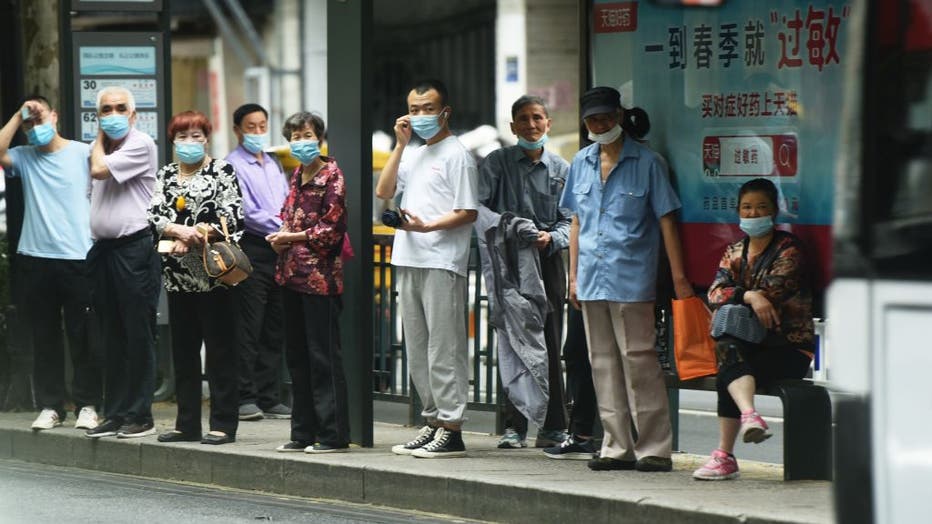China records slowest population growth in decades, census data shows
BEIJING - China’s population grew at its slowest pace in decades, facing a shrinking workforce as fewer couples are having children, according to government data released on Tuesday — a trend that could pose serious challenges for the country’s economic ambitions.
China’s National Bureau of Statistics announced after a once-a-decade census that the population rose by 72 million people over the past 10 years to 1.411 billion in 2020. It said annual growth averaged 0.53%, down by 0.04% from the previous decade.
The figure was the narrowest increase since modern census-taking began in 1953, according to Reuters.
The ruling Communist Party has enforced birth limits since 1980 to restrain population growth but worries the workforce is shrinking. It has eased birth limits, but couples are put off by high costs, cramped housing and job discrimination against mothers.
The population of potential workers aged 15 to 59 fell to 894 million last year, the National Bureau of Statistics reported. That would be down 5% from a 2011 peak of 925 million. The percentage of children in the population edged up compared with 2010, but the group aged 60 and older grew faster.
Changes in birth limits and other policies "promoted a rebound in the birth population," the bureau director, Ning Jizhe, said at a news conference. However, Ning said 12 million babies were born last year, which would be down 18% from 2019’s 14.6 million.

Citizens wait to board a bus at a bus stop in Hangzhou, capital of east China's Zhejiang Province, May 11, 2021. (Photo credit: Costfoto/Barcroft Media via Getty Images)
China, along with Thailand and some other developing Asian countries that are aging fast, faces what economists call the challenge of whether it can grow rich before it grows old. Some warn China faces a "demographic time bomb."
The potential shortage of workers needed to generate economic activity and tax revenue comes as President Xi Jinping's government boosts spending on its military and efforts to create global competitors in electric cars and other technologies.
Reflecting the issue’s sensitivity, the statistics agency took the unusual step last month of announcing the population grew in 2020 but gave no total. That looked like an effort to calm companies and investors after The Financial Times reported the census might have found a surprise decline.
"We are more concerned about the fast decline in the proportion of the working-age population compared to the total population," said Lu Jiehua, a professor of population studies at Peking University.
The working-age population will fall from three-quarters of the total in 2011 to just above half by 2050, according to Lu.
"If the population gets too old, it will be impossible to solve the problem through immigration," said Lu. "It needs to be dealt with at an early stage."
But couples who want a child face daunting challenges, including many sharing crowded apartments with their parents. Child care is also expensive and maternity leave is short. Most single mothers are excluded from medical insurance and social welfare payments, and some women worry giving birth could hurt their careers.
"When you have a kid, you take pregnancy leave, but will you still have this position after you take the leave?" said He Yiwei, who is returning from the United States after obtaining a master’s degree. "Relative to men, when it comes to work, women have to sacrifice more."
Japan, Germany and some other rich countries face the same challenge of supporting aging populations with fewer workers. But they can draw on investments in factories, technology and foreign assets. By contrast, China is a middle-income country with labor-intensive farming and manufacturing.
The decline in the working-age population "will place a cap on China’s potential economic growth," said Yue Su of the Economist Intelligence Unit in a report. That is a "powerful incentive to introduce productivity-enhancing reforms."
The International Monetary Fund is forecasting Chinese economic growth of 8.4% this year following a rebound from the coronavirus pandemic. The Communist Party wants to double output per person from 2020 levels by 2035, which would require annual growth of about 4.7%.
In 2015, rules that limited many couples to having only one child were eased to allow two. However, China’s birth rate, paralleling trends in South Korea, Thailand and other Asian economies, already was falling before the one-child rule. The average number of children per mother tumbled from above six in the 1960s to below three by 1980, according to the World Bank.
Demographers say official birth limits concealed what would have been a further fall in the number of children per family.
The one-child limit, enforced with threats of fines or loss of jobs, led to abuses including forced abortions. A preference for sons led parents to kill baby girls, prompting warnings millions of men might be unable to find a wife, fueling social tension.
This week’s data showed China has 105.7 million men and boys for every 100 women and girls, or about 33 million more males.
The ruling party says the policy averted shortages of food and water by preventing as many as 400 million potential births. But demographers say if China followed Asian trends, the number of additional babies without controls might have been as low as a few million.
After limits were eased in 2015, many couples with one child had a second but total birth rates fell because fewer had any at all.
RELATED: China defends how it handled the rocket falling to Earth
The Associated Press contributed to this report.

